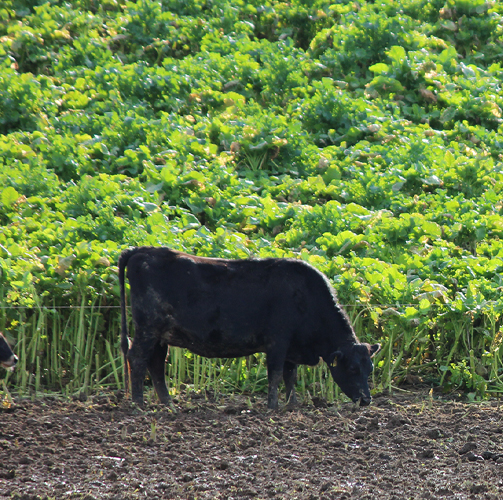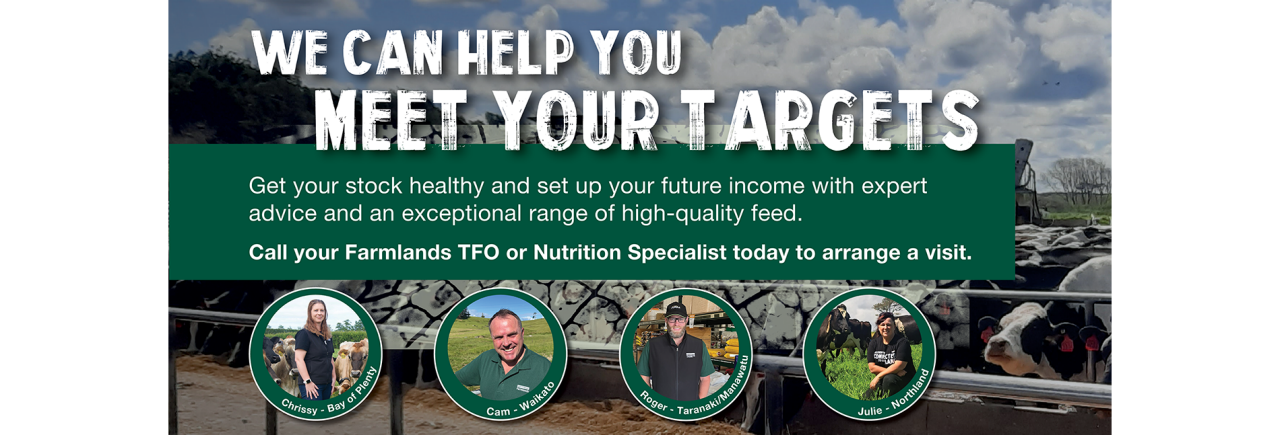

Confident Farmers Get Proactive on Nutrition
Optimism is returning to the dairy sector after a tough year, and this is leading to more positive discussions in the nutrition space.
The coming season is bringing with it a change in attitude. Farmlands Team Lead – Nutrition, Chris Stephens, says this time last year there was a lot of negativity around pricing, so farmers were focused on finding the cheapest way to feed their herds. “I fully understand that was a situation everyone was in, but in the discussions we're having this year, people want to potentially feed a little bit more or add more starch into the diet,” he says. “It's nice to be sitting down with farmers who have that performance focus again. I want that conversation. They’re saying, ‘I'm going to rear a few more calves,’ or, ‘I'm going to milk another 30 cows,’ and they want to know what they need to do to achieve it, so the positive mindset is coming back again.” Chris says the renewed optimism means farmers are thinking more about productivity rather than simply survival, and they’re targeting the first 100 days of lactation. “Get that feed right, use a high-quality feed, get them peaking in milk production, get them in calf and then make some management decisions from there, depending on what the season brings.”
He says the key message from the Farmlands nutrition team leading into spring is to focus on that front end of the season and get the cows in calf. After that, farmers have a variety of management tools at their disposal, depending on how the season plays out. “Am I going to put in crop, am I going to feed PKE [palm kernel extract]? How much silage have I managed to get? All that went away last year – it was just, ‘That's going to cost me money so I'm not going to do it.’ They weren't in that space of forward thinking.” Chris expects to see this change in attitude translate into more intensive production, particularly in the window between System 2 and System 4, where he says it tends to fluctuate. “I would just about guarantee some of those System 3 farms last year turned into System 2 farms and System 4 went to System 3. Once you're at that System 5 farm, you're kind of locked because you've got quite a high stocking rate and things like that.
Those guys tend to live by the sword and die by the sword a bit more.” Much of the country has experienced good pasture growing conditions recently, with El Nino failing to deliver the expected drought in the North Island. However, Chris warns that the dry matter in pasture has “crashed away” between September and November in the past few years, depending on the region. “You think there's a lot of grass in the paddock because it's all standing and it looks like quite a lot, but the pasture is actually quite low in dry matter. We've started to add quite a lot of protein to cows’ diets in spring, which would normally not be needed because they would be getting so much protein from the pasture. The important thing is to be aware of these issues and talk to your nutrition specialist about your options.”

